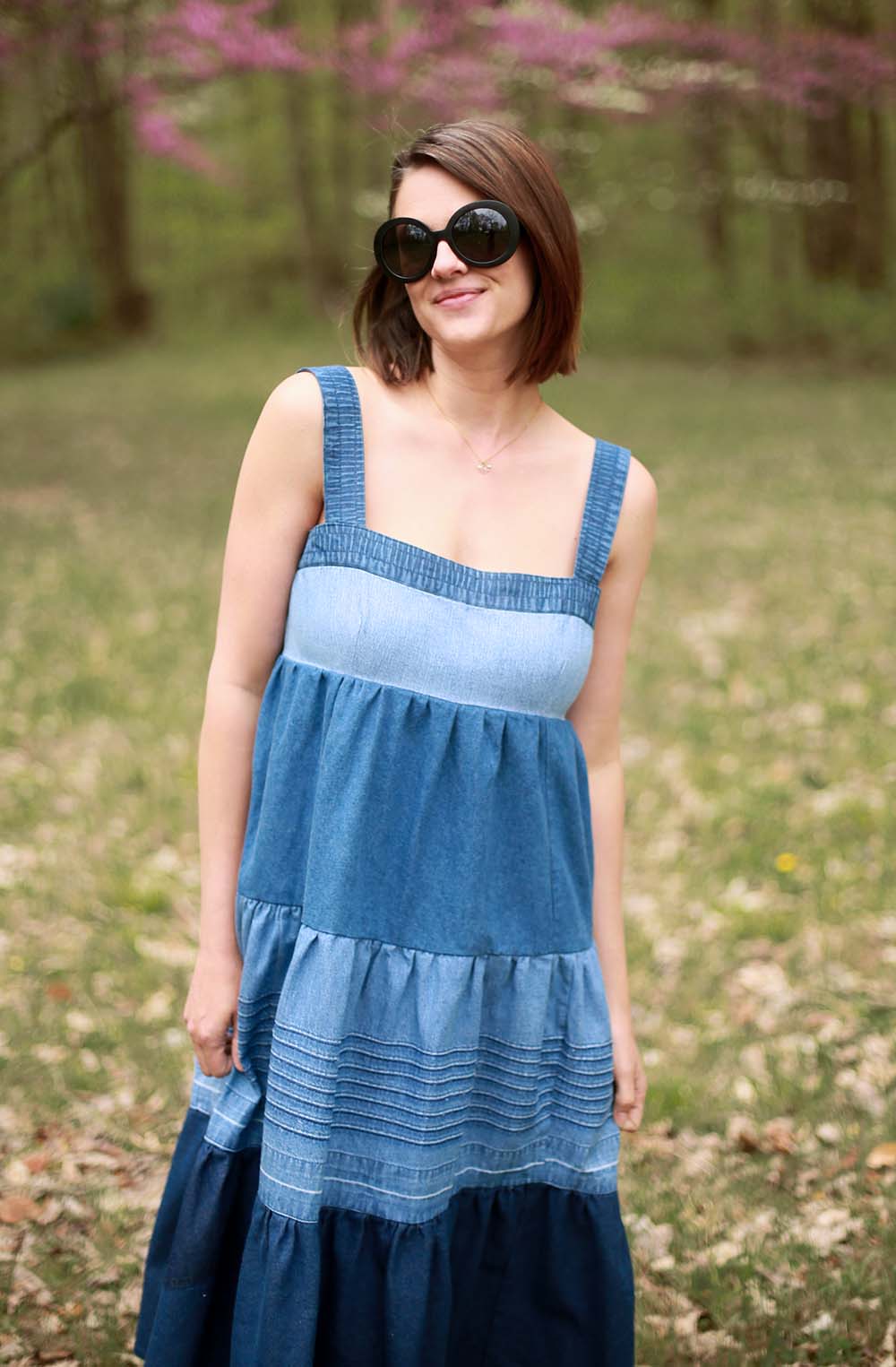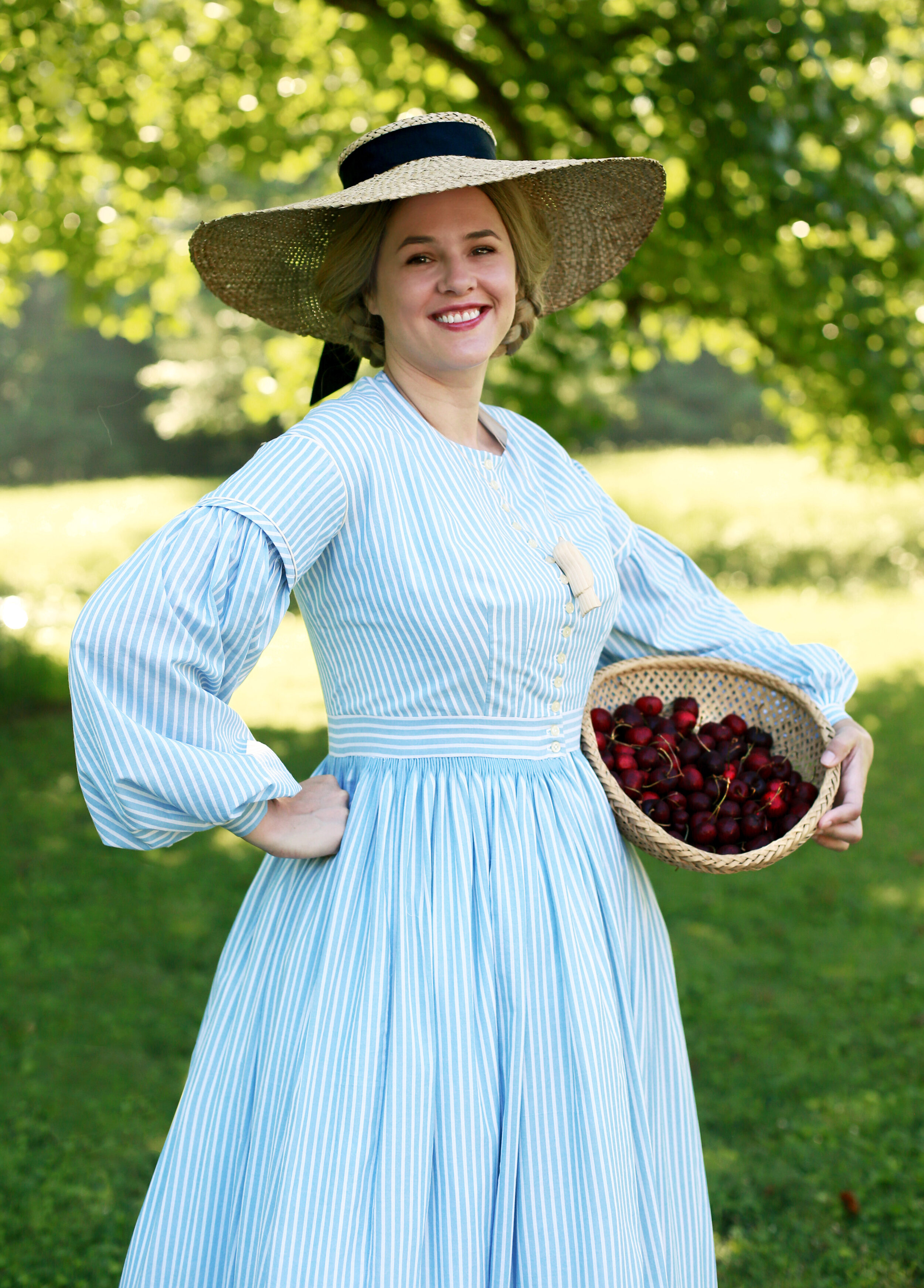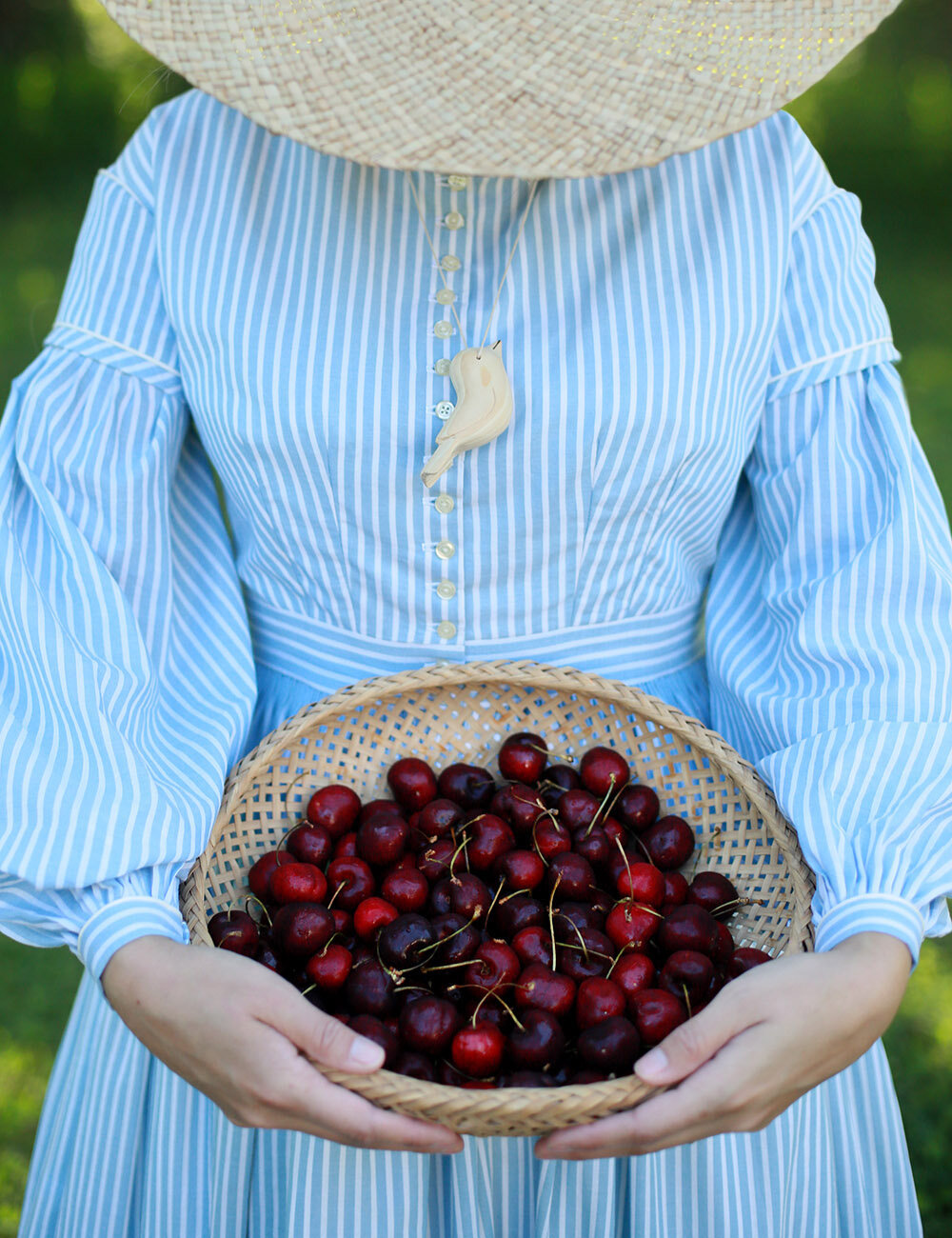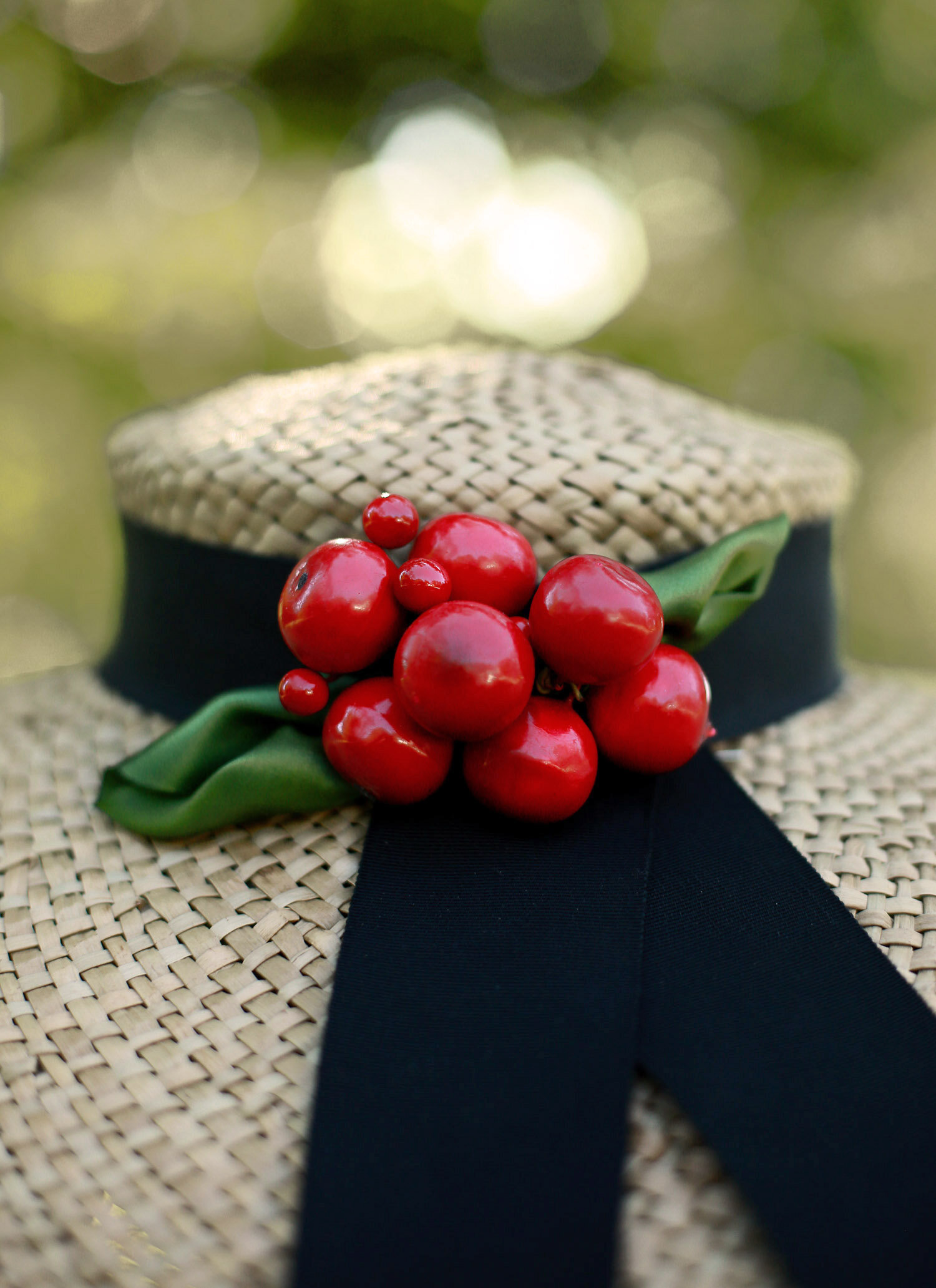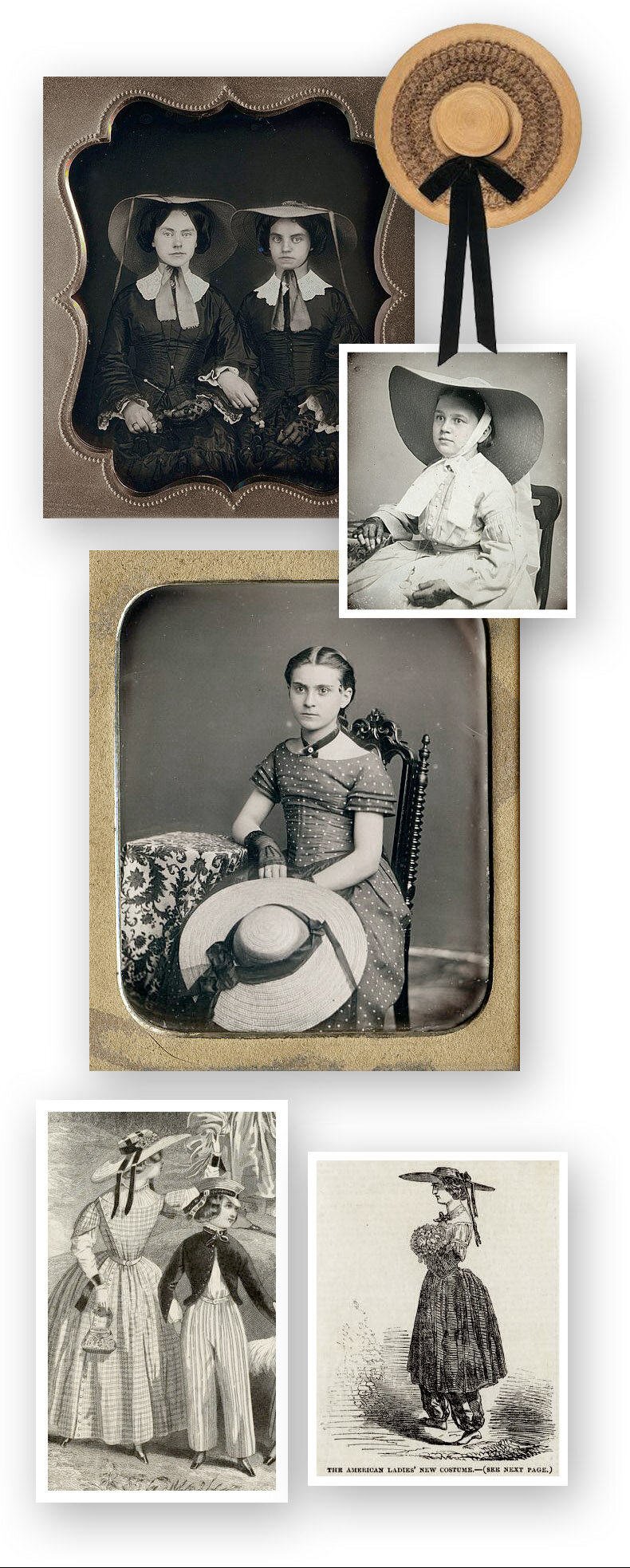Summer Work Dress
For summer, Kirsten wears a lightweight cotton work dress. Creating this piece was a fun way to combine the character’s dress (which I believe was inspired by this painting) with a historically accurate adult silhouette. As I breakdown each portion of the dress, I’ll assign it to one of three categories - matches doll AND historically accurate, matches doll but without historical research and upgraded for historical accuracy.
Let’s start with the bodice of the dress. Kirsten has a squared neckline but I chose to do a more rounded shape, which I believe to be a historical upgrade. Sure, there are examples of square necklines in the 19th century, but they are often deeper (like the 1870s) or constructed by way of shoulder straps as was done in the 18th century and early 19th. Neither of those examples result in the high neckline that was used in work dresses of the 1850s - thus I opted for a round neck.
To fit the bust line of a woman’s dress (my chest is rather large and a ten year old girl wouldn’t have developed in that area yet) I used a pair of darts on each side. This is a historical upgrade based on countless examples from the era.
To capture the look of the shorter sleeve doll’s dress, I created a two piece sleeve to mirror examples I found in my research. This style of sleeve, composed of a short upper sleeve and a fuller under sleeve, was common during the 1840s-1850s. Like the doll dress, I added piping details to the upper sleeve along with a bias detail which was purely my own design decision. Adult women would have always worn long sleeves for daytime in the 19th century. For a laboring woman, sleeves provided a layer of protection - from the sun or other elements. A woman in higher society would have also shielded herself from the sun, AND from the eyes of others outside her social class. In private evening functions, it would have been acceptable to reveal the arms, shoulders and décoletté, but never in the daytime hours.
Other bodice elements like the dropped shoulders, center front buttons and cross grain waistband are both historically accurate and used in the doll’s dress.
To achieve the fullness I wanted for my skirt, I created cartridge pleats, which I hand sewed to my waistband. The doll’s dress doesn’t have the same fullness to fit into the waistband, so hers is simply gathered.
Finally, I opted to incorporate Kirsten’s growth stripes at the hem of the skirt - something absolutely used for younger girls in the 1850s, but not something you see as often on women’s skirts. I’m ok with veering from accuracy here because I feel this helps my costume capture the essence of Kirsten’s summer look.
Blue and White Striped Fabric
The blue and white stripe of the fabric is something I believe was popular in the 1980s when the Kirsten doll was designed and found it’s way into her summer look. Historically I’ve found more examples of similar stripes in late 19th/early 20th than the 1850s (again, I think this is the influence of Carl Larsson), although that doesn’t mean they didn’t exist then too, I just couldn’t find concrete examples like I have in my previous editions of The Kirsten Project. Thus, this is a portion of my costume where I’ve opted to copy the doll without extant dresses or historical images to work from.

